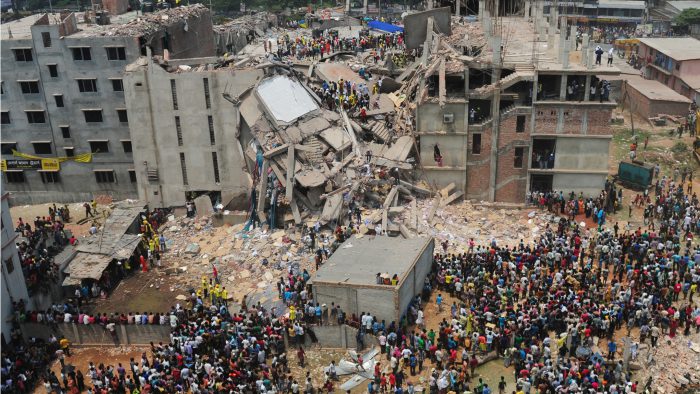Yes we think that a # can matter and the campain #whomademyclothes is important to put light in the dark corners of fashion industry. That is why we are one of the participants in the campaign. We want more people to think one more time before they buy more clothes.
The homepage for Fashion Revolution says:
”Much of the global fashion industry is opaque, exploitative and environmentally damaging and desperately needs revolutionary change. We love fashion, but we don’t want our clothes to come at the cost of people or our planet.”
The backround is that 1138 people died and 2500 more were injured when the Rana Plaza building i Bangladesh collapsed. Most of the victims were young women. That’s when Fashion Revolution was born. There were five garment factories in Rana Plaza all manufacturing clothing for big global brands.

”We believe that 1,138 is too many people to lose from the planet in one building, on one terrible day to not stand up and demand change. However, the majority of the people who makes clothes for the global market live in poverty, unable to afford life’s basic necessities. Many are subject to exploitation; verbal and physical abuse, working in unsafe and dirty conditions, with very little pay. Since then, people from all over the world have come together to use the power of fashion to change the World.”
In refo we are learning more about how the fashionworld functions every day by working with textile waste and recykling, upcycling and also trying to do this in a bigger scale. The clothes have often traveled far before we wear them. From the cotton farmer, spinners, weavers, dyers, sewers and then finally hitting the shopshelf. About 75 million people work in the textile industries and most of them are women in the ages between 18-35.
Therefore we work a lot with changingattitudes because wastematerial can be seen as a rawmaterial to create new things. We make a lot of new fantastic things out of things that are no longer used and practically on the way to destraction. But before it is waste it could be used many more times and that is another way of saving resources. As a consumer I have a lot of power and by using it wisely I belive that I can change things.
My best question
May I introduce my best question for not buying? It is ”do I really have to buy this item?”. It stops me from buying unnecessary things and thinking twice Before I do shop. In my head next qustion pops – is it possible to repair it instead? Can I find someone to mend my leatherjacket from the 40ties that my grandmother used to have?
If I feel that I still need the item, I try to find it 2 hand, from my sister or at friend with the same size as me. I even have shared custody with a friend who likes the same things as I do. We bought it together and we change in which waredrobe it is to find right now. It is a good oportunity to take a fika, a good chat and change some clothes.
Well, last step is to do some research in what to buy and where. Buying good quality to be able to wear it a long time, or to give it to someone that loves it when you don´t want it anymore is the last step. And for me it is importent where and how it was produced.
We believe that a # is important to find other nerds that want to change the world and together we can do so much more. To think one more time before shopping is a good way to contribute to a better World.
//Liselotte Norén
PS Tomorrow you will find us at ReTuna that is a very interesting place, full of rawmaterial, or wastematerial as some choose to call it. I will be wearing clothes that are refomade of course as I like to walk the talk. By doing so I learn more about the challenges and ways of transitions.

Lämna ett svar